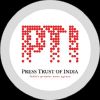New Delhi: The Moon may be at least 4.46 billion years old, according to a study that pushes back the age of the lunar body by 40 million years.
Over four billion years ago, when the Solar System was still young and the Earth was still growing, a giant object of the size of Mars crashed into our planet. The biggest piece that broke off of the early Earth formed the Moon, the researchers said.
However, the precise time when this happened continues to be a mystery, they said. The study, published in the journal Geochemical Perspectives Letters, used crystals brought back from the Moon by Apollo astronauts in 1972 to help pinpoint the time of the Moon's formation.
"These crystals are the oldest known solids that formed after the giant impact. And because we know how old these crystals are, they serve as an anchor for the lunar chronology, said Philipp Heck, a professor at the University of Chicago in the US, and the study's senior author. The samples of lunar dust used in the study were brought back by Apollo 17 astronauts in the last crewed mission to the Moon in 1972.
This dust contains tiny crystals that were formed billions of years ago, and are a telltale sign of when the Moon must have formed, according to the researchers. When the Mars-size object hit the Earth and formed the Moon, the energy of the impact melted the rock that eventually became the surface of the lunar body, they said.
"When the surface was molten like that, zircon crystals couldn't form and survive. So any crystals on the Moon's surface must have formed after this lunar magma ocean cooled," said Heck. "Otherwise, they would have been melted and their chemical signatures would be erased, he added.
The study marks the first use of an analytical method called atom probe tomography which nailed down the age of this oldest known lunar crystal, the researchers said.
In atom probe tomography, we start by sharpening a piece of the lunar sample into a very sharp tip, using a focused ion beam microscope, almost like a very fancy pencil sharpener, said the study's lead author, Jennika Greer, a research associate at the University of Glasgow, UK.
"Then, we use UV lasers to evaporate atoms from the surface of that tip. The atoms travel through a mass spectrometer, and how fast they move tells us how heavy they are, which in turn tells us what they're made of," Greer said.
This atom-by-atom analysis showed how many of the atoms inside the zircon crystals had undergone radioactive decay. When an atom has an unstable configuration of protons and neutrons in its nucleus, it undergoes decay, shedding some of these protons and neutrons and transforming into different elements.
For instance, uranium decays into lead. Scientists have established how long it takes this process to occur, and by looking at the proportion of different uranium and lead atoms (called isotopes) present in a sample, they can tell how old it is.
Also read- 'India should now aim for sending first Indian to Moon by 2040': PM Modi



